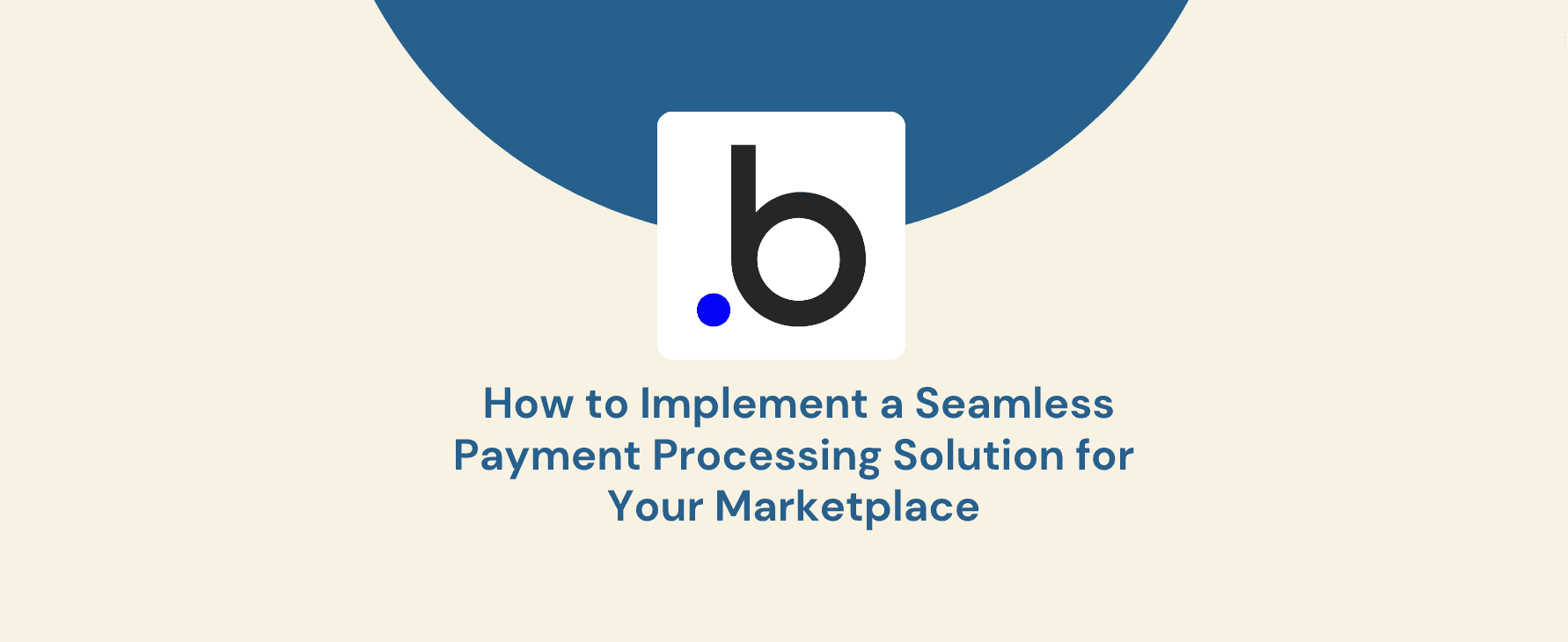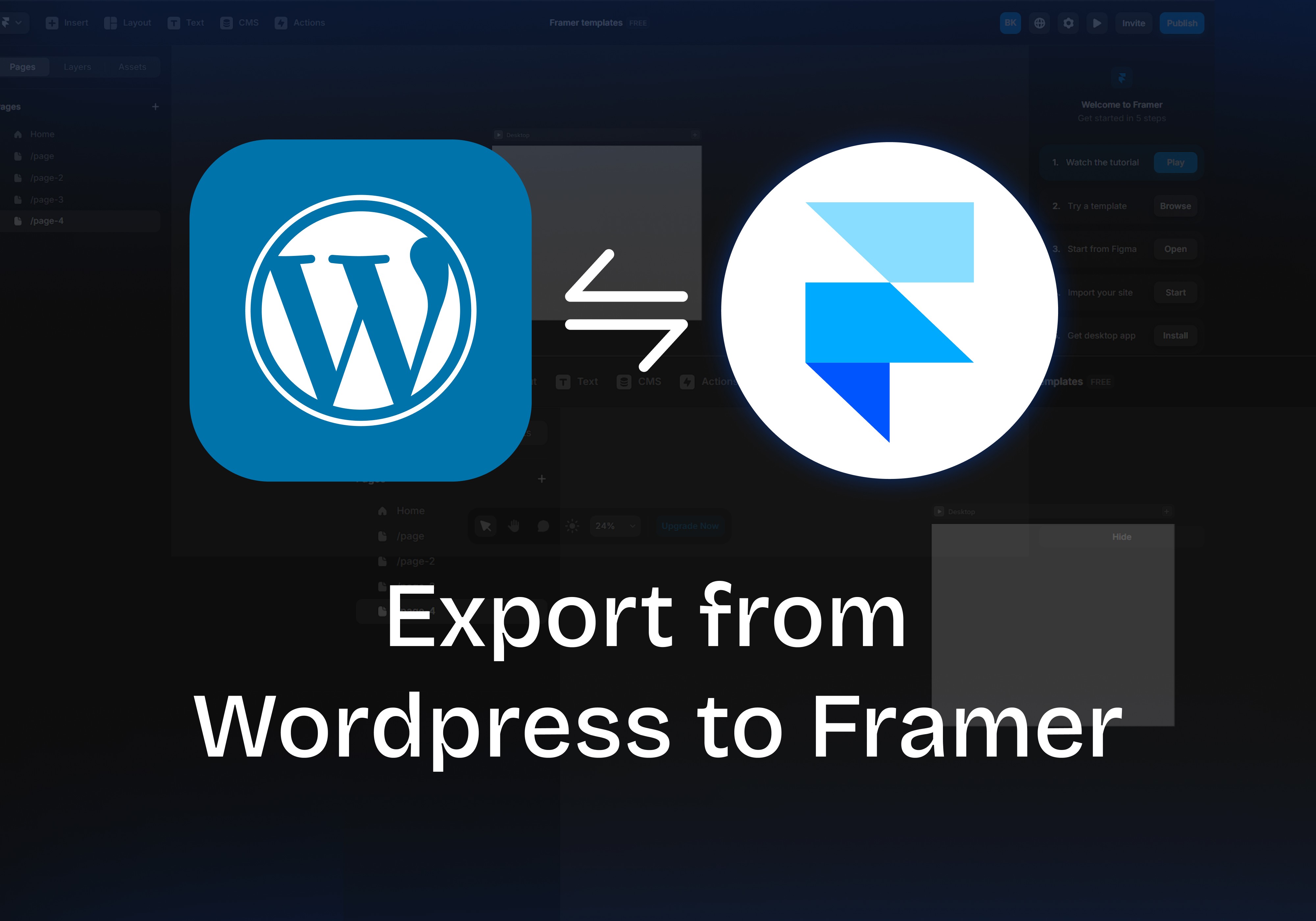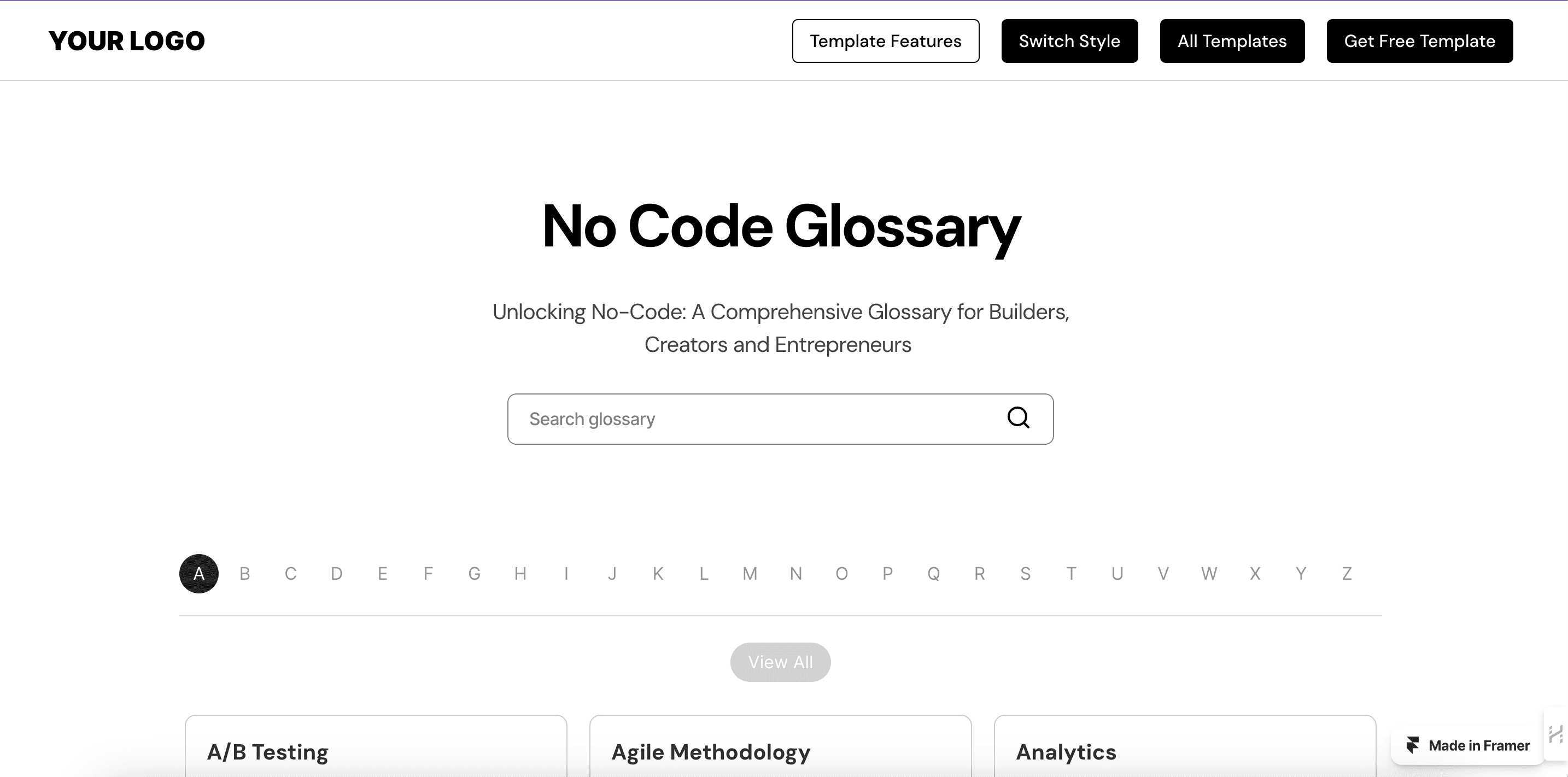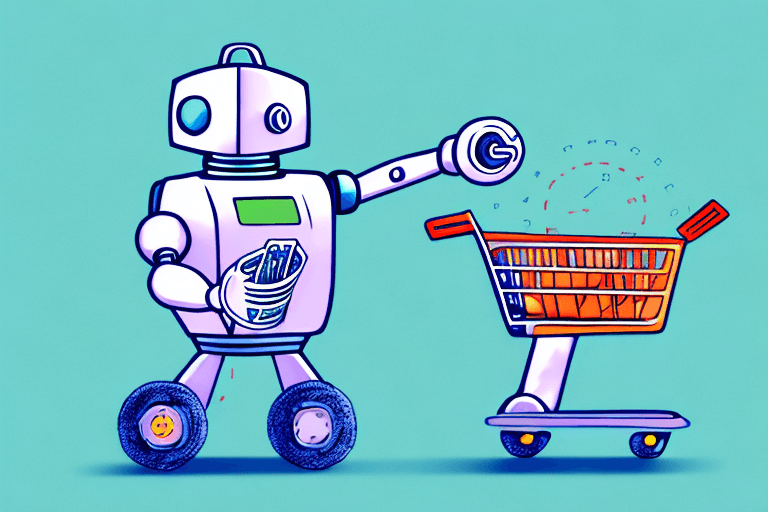Machine learning (ML) is rapidly transforming industries, offering businesses the power to unlock valuable insights from data. But for many, the technical expertise needed to build and deploy ML models has been a barrier to entry. This is where no-code machine learning steps in, democratizing ML by offering a user-friendly approach for anyone to create intelligent applications.
In this article, we'll guide you through the exciting world of no-code machine learning. We'll explore what it is, how it works, and the benefits it offers. By the end, you'll have a clear understanding of how to leverage no-code ML to build smart applications and gain a competitive edge, regardless of your coding background.
Understanding No Code Machine Learning
No code machine learning is a revolutionary technology that is changing the way people build smart applications and models. It has opened up a world of possibilities for individuals without programming expertise, allowing them to create machine-learning models and workflows with ease.
One of the key features of no code machine learning is its use of graphical interfaces and visual workflows. This approach simplifies the machine learning process, making it accessible to a wider audience, including business analysts, marketers, and other non-technical professionals. With no code machine learning, users can create models by dragging and dropping components rather than writing code.
Another important aspect of no code machine learning is its ability to streamline the machine learning process. By leveraging pre-built components and modules, users can create models and workflows quickly and easily. This eliminates the need for programming expertise, making machine learning accessible to more people.
What is No Code Machine Learning?
No code machine learning is a way to build machine learning models without writing code. It leverages pre-built components and modules to create models and workflows, with the user simply selecting the appropriate components and dragging them into place. This approach simplifies the machine learning process, making it accessible to a wider audience.
No code machine learning platforms typically include several key components, such as data preparation tools, model building tools, and deployment options. Data preparation tools allow users to import and clean data, while model building tools allow users to create and customize machine learning models. Deployment options provide users with a way to deploy their models, either to a cloud environment or as an API.
Why No Code Machine Learning Matters
No code machine learning is important because it allows individuals without programming expertise to take advantage of the benefits of machine learning. By democratizing the technology, more people can create smart applications and models, leading to better insights and more informed decision-making. This can help businesses improve their operations and gain a competitive edge.
Moreover, no code machine learning makes it possible for businesses to save time and resources by eliminating the need for a dedicated team of data scientists and programmers. This means that businesses can focus on other areas of their operations while still benefiting from the insights provided by machine learning models.
Key Components of No Code Machine Learning Platforms
No code machine learning platforms typically include several key components, each of which plays an important role in the machine learning process. One of the most important components is data preparation tools. These tools allow users to import and clean data, ensuring that the data is accurate and ready for analysis.
Another key component of no code machine learning platforms is model building tools. These tools allow users to create and customize machine learning models, selecting the appropriate algorithms and parameters for their specific use case.
Finally, deployment options are an important component of no code machine learning platforms. These options provide users with a way to deploy their models, either to a cloud environment or as an API. This makes it possible for businesses to integrate machine learning models into their existing workflows and applications, improving their operations and decision-making processes.Classification and Regression: Used to predict outcomes and numerical values based on input data.
Clustering and Dimensionality Reduction: Group similar data points and simplify complex datasets.
Time Series Forecasting and Anomaly Detection: Predict future values and identify unusual patterns in time-based data. By understanding and utilizing these techniques, users can analyze data effectively and gain valuable insights without coding expertise.
Getting Started with No Code Machine Learning
Getting started with no code machine learning is easier than you might think. Here are some steps to help you get started.
Machine learning is a rapidly growing field that is transforming many industries. With no code machine learning, you can build models without needing to write complex code. This makes it accessible to a wider range of people, from business analysts to data scientists.
Choosing the Right No Code Platform
The first step in getting started with no code machine learning is choosing the right platform. There are several options available, and it's important to find one that aligns with your needs and skill level.
Google Cloud AutoML is a popular choice for those who want an easy-to-use platform with a wide range of features. DataRobot is another popular option that offers a range of tools for building and deploying models. H2O.ai is a good choice for those who want a platform that can handle large datasets, while Databricks is a great option for those who want to work with Spark.
Compare these options and others to find the one that best fits your needs. Look for a platform that offers good documentation, a supportive community, and a range of features that will help you achieve your goals.
Setting Up Your First No Code Machine Learning Project
After you've selected a no code machine learning platform, it's time to set up your first project. This typically involves creating a new project within the platform and selecting the appropriate components for data preparation, model building, and deployment.
Many platforms offer templates or pre-built models that you can use as a starting point. This can help you get up and running quickly and begin to explore the capabilities of the platform.
When setting up your project, it's important to define your goals and objectives. What problem are you trying to solve? What data do you need to analyze? What metrics will you use to evaluate your model?
Importing and Preparing Data for Analysis
The next step is to import your data and prepare it for analysis. This may involve cleaning the data, transforming it into the appropriate format, and selecting the relevant features for analysis. Many no code machine learning platforms include built-in data preparation tools to simplify this process.
It's important to ensure that your data is accurate and complete before you begin building your model. This will help you avoid errors and ensure that your model is reliable.
Once your data is prepared, you can begin building your model. This may involve selecting a machine learning algorithm, tuning the hyperparameters, and evaluating the performance of your model.
Remember, no code machine learning is a powerful tool that can help you solve complex problems and make better decisions. By following these steps and exploring the capabilities of your chosen platform, you can begin to unlock the potential of machine learning for your organization.
Exploring No Code Machine Learning Techniques
Machine learning has revolutionized the way we approach data analysis. With the advent of no code machine learning platforms, it has become easier than ever to implement machine learning techniques without any prior coding experience. In this article, we will explore some of the popular machine learning techniques available in no code platforms.
Now that you've set up your project and prepared your data, it's time to explore some of the machine learning techniques available in no code platforms. Here are a few techniques to get you started.
Classification and Regression
Classification and regression are two common machine learning techniques used to predict outcomes based on input data. Classification is used to classify data into different categories, while regression is used to predict a continuous numerical value. These techniques can be used in a variety of applications, from predicting customer churn to forecasting sales.
For instance, in the case of predicting customer churn, classification techniques can be used to classify customers as churned or not churned based on their past behavior. Regression techniques can be used to predict the revenue generated by a particular customer based on their past purchases.
Clustering and Dimensionality Reduction
Clustering is a machine learning technique used to group similar data points together, while dimensionality reduction is used to reduce the number of features in a dataset. These techniques can be useful for identifying patterns in complex datasets and simplifying the analysis process.
For example, in the case of customer segmentation, clustering techniques can be used to group customers with similar behavior together. Dimensionality reduction techniques can be used to identify the most important features that contribute to customer behavior, thereby simplifying the analysis process.
Time Series Forecasting and Anomaly Detection
Time series forecasting and anomaly detection are techniques used to analyze time-based data. Time series forecasting is used to predict future values based on historical trends, while anomaly detection is used to identify unusual or unexpected patterns in the data. These techniques can be valuable in industries such as finance, healthcare, and retail.
For instance, in the case of financial forecasting, time series forecasting techniques can be used to predict stock prices based on historical trends. Anomaly detection techniques can be used to identify unusual patterns in financial data, such as fraudulent transactions.
In conclusion, no code machine learning platforms offer a wide range of techniques that can be used to analyze data and gain valuable insights. By understanding the different techniques available, you can choose the one that is best suited for your particular use case.
Building and Deploying No Code Machine Learning Models
Machine learning has become an integral part of many industries, and with the rise of no code machine learning platforms, it's easier than ever to build and deploy machine learning models without needing to know how to code. Here are some steps to help you get started:
Defining the Problem
The first step in building a machine learning model is to define the problem you're trying to solve. This involves identifying the data you have available and the outcome you're trying to predict.
For example, if you're working with a dataset of customer information, you might want to predict which customers are most likely to churn. This would involve identifying the relevant features in your dataset, such as customer age, purchase history, and customer service interactions.
Model Selection and Optimization
Model selection and optimization is the process of choosing the appropriate machine learning model for your dataset and fine-tuning its parameters for optimal performance. This process can be streamlined using no code machine learning platforms, which often include built-in optimization tools.
Some popular machine learning models include linear regression, logistic regression, decision trees, and random forests. Each model has its own strengths and weaknesses, and the best model for your dataset will depend on the specific problem you're trying to solve.
Evaluating Model Performance
Once you've built your model, it's important to evaluate its performance. This involves testing the model on a subset of your data to determine how well it performs in predicting outcomes. No code machine learning platforms typically include built-in evaluation tools to simplify this process.
One common evaluation metric is accuracy, which measures the percentage of correct predictions. However, depending on the problem you're trying to solve, other metrics such as precision, recall, and F1 score may be more appropriate.
Integrating Models into Applications
Finally, it's time to integrate your models into your applications. This may involve deploying your models as APIs or integrating them into existing software systems.
For example, if you've built a machine learning model to predict customer churn, you might integrate it into your customer relationship management (CRM) software to help identify at-risk customers and take proactive steps to retain them.
Overall, building and deploying machine learning models can be a complex process, but no code machine learning platforms make it more accessible than ever before. By following these steps and leveraging the tools available, you can build powerful machine learning models to help solve real-world problems.
No code machine learning is a powerful tool for building smart applications and unlocking insights from data. By democratizing the technology and making it accessible to non-technical individuals, it has the potential to revolutionize the way businesses operate. If you're interested in exploring the world of no code machine learning, be sure to choose the right platform, set up your first project, and explore different machine learning techniques to build and deploy your models.
Want ideas on how to automate with AI for your business? Whether it's integrating ChatGPT in your business, or creating a custom chatbot, our team of AI developers, can help you be more efficient, generate more revenue and leverage AI today.
Frequently Asked Questions (FAQs)
1. What is no code machine learning and why is it important?
No code machine learning refers to the process of building machine learning models without writing complex code. It empowers individuals without programming expertise to harness the benefits of machine learning. By making technology accessible, it enables more people to create smart applications, gain insights, and make informed decisions, thus transforming business operations and fostering competitiveness.
2. How does no code machine learning work?
No code machine learning platforms use graphical interfaces and visual workflows. Users can create models by dragging and dropping components, eliminating the need for programming. Pre-built components and modules streamline the process, allowing users to quickly create models and workflows. These platforms encompass data preparation tools, model building tools, and deployment options, simplifying the entire machine learning process.
3. What are the key components of no code machine learning platforms?
No code machine learning platforms consist of essential components, including data preparation tools, model building tools, and deployment options. Data preparation tools facilitate data import and cleaning, ensuring accurate analysis. Model building tools enable users to customize machine learning models using appropriate algorithms and parameters. Deployment options let users deploy their models to cloud environments or APIs for seamless integration into existing workflows.
4. How do I get started with no code machine learning?
Getting started with no code machine learning is straightforward. Begin by selecting a suitable platform, such as Google Cloud AutoML, DataRobot, H2O.ai, or Databricks, based on your needs and skill level. Set up your first project within the chosen platform, define your goals, and select the necessary components for data preparation, model building, and deployment. Import and prepare your data for analysis, and explore various machine learning techniques available in the platform.
5. What are some common machine learning techniques available in no code platforms?
No code machine learning platforms offer a range of techniques, including:
Classification and Regression: Used to predict outcomes and numerical values based on input data.
Clustering and Dimensionality Reduction: Group similar data points and simplify complex datasets.
Time Series Forecasting and Anomaly Detection: Predict future values and identify unusual patterns in time-based data. By understanding and utilizing these techniques, users can analyze data effectively and gain valuable insights without coding expertise.























